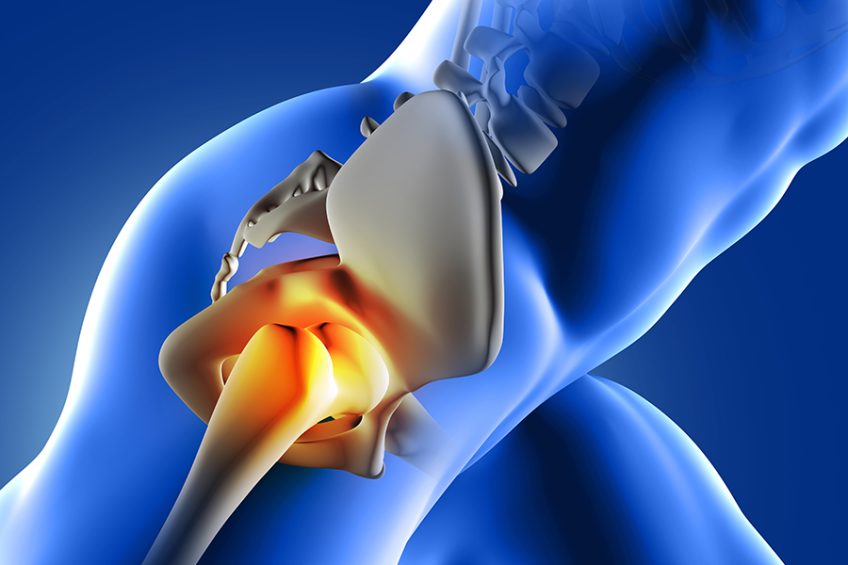Coxarthrosis is considered to be one of the most serious diseases affecting the global population and not necessarily because of the pain it is accompanied by, but rather from the perspective of how it affects the patient’s quality of life.
The hip joint is one of the most sought after joints in the body. It consists of the femoral head and the acetabular cavity, and between the two there is a protective layer of cartilaginous tissue that has the role of helping the joint to move evenly and easily.
Over time, however, this tissue can deteriorate and lead to the onset of hip osteoarthritis.
Although this condition is found mainly in middle-aged and older patients, it should be noted that it can also occur at younger ages, under 40 years.
It is important to note that it can be cured in the early stages, but many patients ignore the symptoms and thus are forced to resort to surgery and other more invasive forms of treatment. That is why it is advisable to learn to recognize the symptoms, risk factors and causes that lead to the onset of coxarthrosis.
CONTENT:
Causes
One of the most common causes of hip osteoarthritis is genetic predisposition. In most cases it is a certain pathology or previous circumstances (a familiar history of hip osteoarthritis, for example).
Other causes of hip osteoarthritis:
- old age (usually over 60 years old, but, as I mentioned before, these hip pains can also occur at younger ages);
- various traumas present at the level of the hip (these traumas generally appear as a result of activities that require the joint, such as sports activities);
- congenital hip dislocation;
- extra pounds (obesity increases mechanical stress on the hip);
- gender of patients (men are less affected because their hips are narrower than women);
- various diseases of the musculoskeletal system that can lead to joint disorders (diabetes, hyperthyroidism, Paget’s disease of the bones, etc.).
Symptoms
Pain is one of the most obvious signs of hip osteoarthritis. It should be noted, however, that this is not a constant pain, but a pain that appears and disappears when the person in question makes an effort.
Other symptoms of coxarthrosis:
- registration of a certain stiffness at the level of the hip: there are hip pains that can hinder simple activities such as putting on shoes, bending down to pick up an object)
- the appearance of limping: as the pressure on the hip increases, the tendency to limping can be observed;
- an obvious decrease in mobility: the patient begins to notice that he can no longer stretch his leg back;
- muscle atrophy: this consequence occurs mainly against the background of the weakening of the hip joints, which functions as a domino effect;
- the ability to walk begins to be visibly impaired;
- the installation of a feeling of fatigue, especially after the patient makes an effort to move or to undertake a certain activity that involves the hip joints;
- weather-sensitivity: the patient begins to feel more pronounced joint pain when it is raining.
As mentioned above, these hip pains can be easily treated in the early stages of the disease, but patients most often go to the doctor in the advanced stages of the disease.
It is very important, therefore, that when you notice one or more of the above symptoms, you should consult a specialist.
Treatment
Treatment for coxarthrosis begins with a treatment regimen designed to slow the progression of the condition.
If even after this drug treatment there is hip pain and the disability does not improve, then the doctor may also recommend surgery.
In principle, non-surgical treatment may include, in addition to the medication prescribed by the doctor, the observance of advice such as:
- avoiding long-term efforts involving the hip joint;
- following physiotherapy and physiotherapy procedures;
- an adequate diet (especially in cases where the patient is overweight);
- use a cane to reduce pressure on the hip;
- periodic rest.
On the other hand, in the case of advanced hip osteoarthritis, the doctor may recommend a complete replacement of the joint (or prosthesis of the hip, as the procedure is also known).
Such an intervention will help the patient to visibly and considerably improve his quality of life.
Prevention
In order to prevent the appearance of this disease, you can take some simple measures to counteract the favorable factors.
Thus, it is recommended to avoid carrying weights, to wear high-heeled shoes, to sit for a very long time on a chair, in low armchairs or standing.
It is also advisable to have a constant exercise program, avoid walking very long distances and always be careful to keep your weight within normal parameters.


